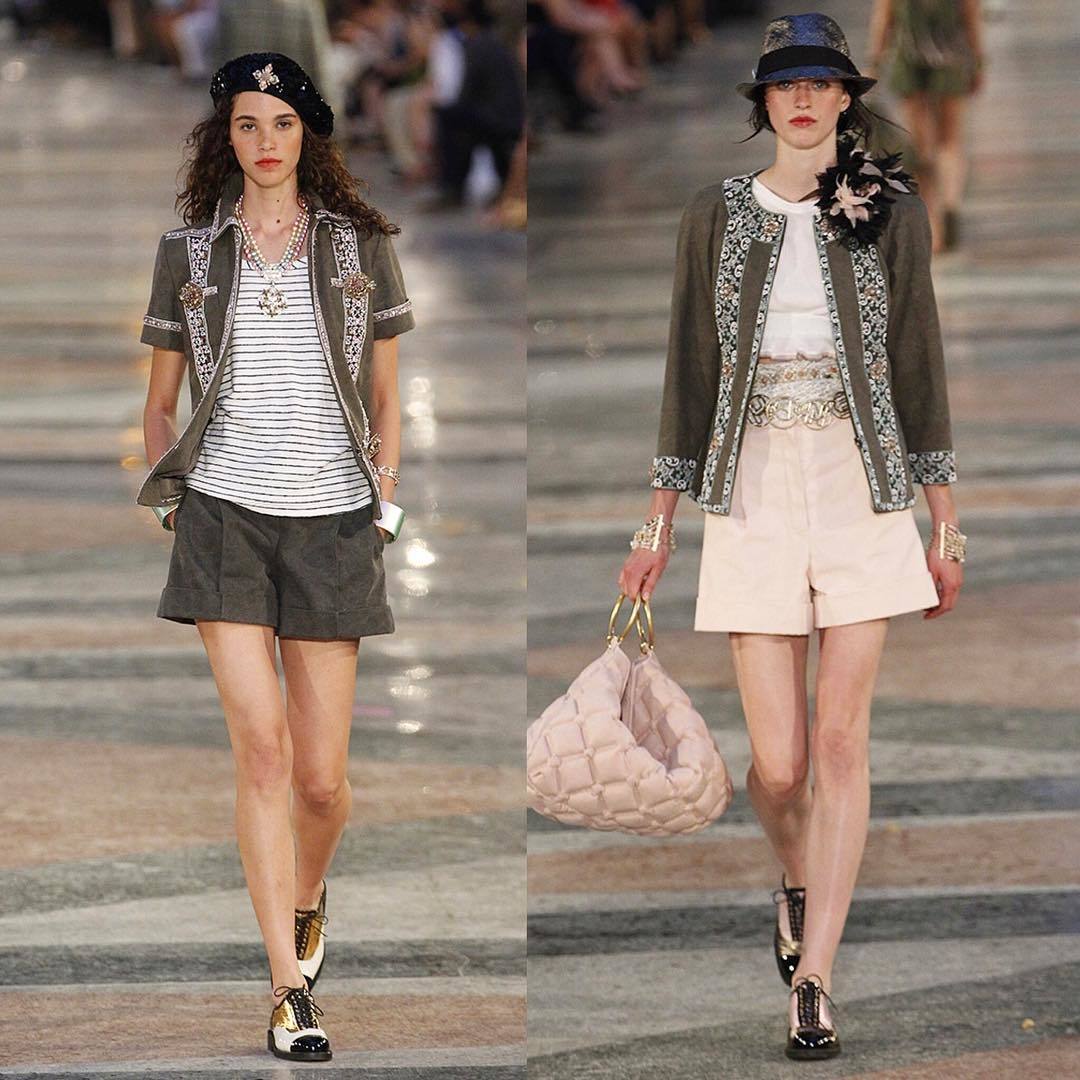This week Chanel held their much discussed 2017 cruise show in Havana, Cuba. The display was the largest international fashion show in the country’s history and was promoted as a sign of support to a nation in the process of massive transition.
On a more personal level, Karl Lagerfeld has been vocal about his ongoing interest in Cuba—citing it as a longtime inspiration. In October the house released a statement that read: “The cultural richness and the opening of Cuba to the world became a source of inspiration for Karl Lagerfeld and Chanel”. The show was a tidy way to pay homage to a culture that has indirectly contributed to the brand—especial amidst rumours that the designer is planning his retirement. There is something quietly romantic about beginning to wrap up such a creative career in a country that is beginning to share it’s own creative spirit with the world for the first time in decades.
But amidst the good intentions, criticisms have percolated. The irony of staging such a lavish event in a country where Chanel good’s aren’t available to buy wasn’t lost on anyone. T here was always going to be tension when a brand whose garments routinely cost tens of thousands of dollars descends on a communist country where 75 percent of the population earns an average of $25 a month.
Concerns were compounded when the Panama Post reported that Havana police were removing beggars from Cathedral Square near where the show would be held. Cuban journalist Yoani Sanchez even Tweeted images a homeless man being being forced to leave.
#Cuba Policía desaloja a los mendigos de la Plaza de la Catedral porque preparan el lugar para el desfile de @CHANEL pic.twitter.com/NWvYj8ugcz
— Yoani Sánchez (@yoanisanchez) April 25, 2016
It should be made clear, these removal weren’t on behalf of the brand. Similar accusations arose last year around the Pope’s visit. But concerns weren’t soothed by the presence of Tony Castro—former president Fidel’s grandson—in the lineup of models. Or the decision to clear locals away from the area, although many peered over balconies to catch a look. One 52-year old woman later told The Guardian, “What a sight. But I would have liked to be closer to the models.”
Cuban designer Idania del Rio was more direct with her concerns in the lead up, “I think that catwalk is going to be more for Chanel than for Cuba. I don’t know whether the people here in Cuba are ready for this type of product.”
There is no doubt that the show was a wholehearted celebration of local culture. Guests arrived in classic cars, a band played Cuban music, and the designs held countless winks to local style. Che’s beret was referenced, as were Guayaberas (classic short-sleeved Cuban shirts) and Panama hats.
But even this nostalgic display of support was interpreted as reductive by many local Cubans. The 1950s references were after all to a time in the country’s history where America and other capitalist countries used Cuba as an “island of sin”. In the 60s Susan Sontag described Cuba in an article for Ramparts as “a country known mainly for dance, music, prostitutes, cigars, abortions, resort life, and pornographic movies.”
When Fidel Castro won power in 1959 he set about ridding the island of opulence, insisting on uniform equality and banning foreign brands and fashions. The style Chanel was honouring through their designs was a product of being frozen in time. As a result, fashion and politics have always been strangely entwined in Cuba.

At this intersection, the other side of the ethical quandary begins to take form—here the brand arguably emerges as less an opportunist and more a symbol of support and opportunity. In many ways the Chanel show can be viewed as another cultural shift demonstrated through clothes. Albeit very expensive clothes.
Cuban designer Raúl Castillo has said “When we become a normal country, without the embargo, we will be leaders of fashion”. The brand’s very public call to attention over Cuban style is no doubt a jump start, while the media coverage of the show has draw new eyes to the local scene.
Additionally while the display of luxe could be viewed as gouache, it also brought a new kind of consumer for local businesses. Vogue UK reported that transporting Chanel’s guests to the show alone saw the renting of 170 vintage cars, and some of the models featured were local faces. That’s not even beginning to take into account the amount of immediate business the show would have stimulated through the tourist and service industries.
But arguably more than anything, the show was an effort to be inclusive—even if it was at times problematic. After almost half a century of being so distanced from the wider world the Chanel show was an invitation for their audience to look closer. Millions of people will see these images, they will encourage tourism but also help dislodge a well worn but misplaced assumption that Cuba is a place still frozen in time.
Speaking to Reuters Marilia Veliz, a Cuban accountant, added that it’s shortsighted to assume that the local population didn’t get a kick out of it: “Just because I can’t afford it doesn’t mean I want to deny others that luxury. And who knows, maybe one day. It’s important to dream.” After all, we all love Chanel—it holds a sentimental importance that is fed by a wistful nostalgia and a hunger for the beautiful and new—and God knows, most of us can’t afford it either.
Credits
Text Wendy Syfret
Image via Instagram
